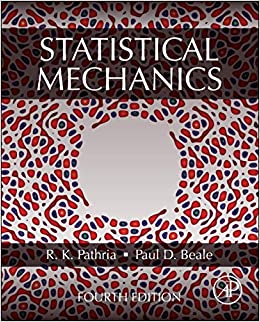Polyatomic molecules in which the three moments of inertia are all approximately (I) have a rotational energy
Question:
Polyatomic molecules in which the three moments of inertia are all approximately \(I\) have a rotational energy spectrum given by
\[E_{\mathrm{rot}}=\frac{\hbar^{2} l(l+1)}{2 I}\]
with level degeneracy \(g_{l}=(2 l+1)^{2}\). Show that the partition function approaches the classical result (6.5.41) at high temperatures. Show that the low-temperature rotational specific heat is proportional to \(\exp (-2 \theta / T)\), where \(\theta=\hbar^{2} / 2 I k\), and explain the limiting high-temperature behavior using the equipartition theorem. Calculate \(C_{\mathrm{rot}} / N k\) numerically and plot as a function of \(T / \theta\) to show how the specific heat approaches the limiting values.
Fantastic news! We've Found the answer you've been seeking!
Step by Step Answer:
Related Book For 

Question Posted:





